
HOUS.E+by Shanghai architects Polifactory have developed a concept for a rammed earth house that generates energy from a lake on its roof.

Architecture, Art, Design, and Culture using of mud, clay, soil, dirt & dust.

HOUS.E+by Shanghai architects Polifactory have developed a concept for a rammed earth house that generates energy from a lake on its roof.
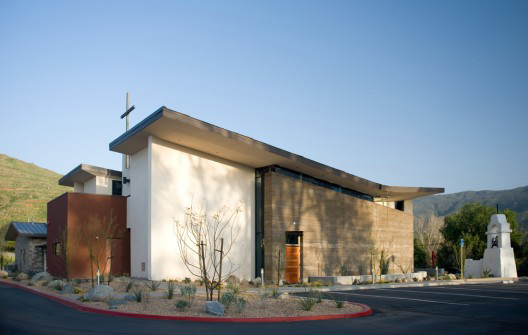
Saint Bartholomew’s Chapel, by Kevin deFreitas Architects, is located in the picturesque back country of northern San Diego County at the base of Mt. Palomar alongside the San Luis Rey River. A very small and intimate historic chapel was destroyed by wild fires that ravaged the reservation in late 2007 and only the original adobe bell tower survived, which became the anchor element in the redesign planning of the new church. The needs of the current congregation and community had changed quite a bit in the past 100 years. Though the fire destroyed a building that hosted many, many important events and celebrations, it also presented a “blank slate” opportunity to update the facility, primarily by doubling the seating capacity.

Mud Hall is a project initiated by Harvard University’s 2012 Loeb Fellows to promote awareness about rammed earth construction and to challenge conventional thinking about green building. Raw earth is the most plentiful and sustainable building material on the planet, yet architects rarely incorporate it into their designs. To demonstrate the potential of mud and clay for everyday buildings, the Loeb Fellows are enlisting 25 students at Harvard’s Graduate School of Design to construct a rammed earth structure at the entrance to the school’s celebrated Gund Hall. Mud Hall is meant to offer an alternative to the current orthodoxy about sustainable construction.
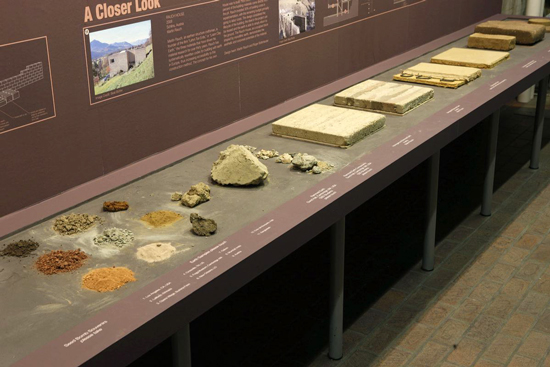
In addition to the rammed earth installations, an exhibit demonstrating materials, techniques and buildings that demonstrate contemporary earth architecture were presented.
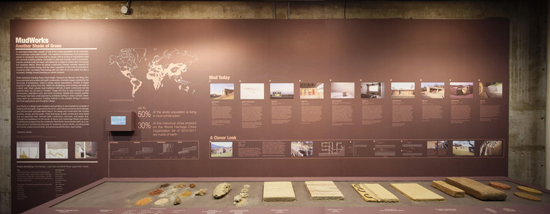
For more information visit the Mud Hall blog, which will chronicle the evolution of the Mud Hall project, and offer detailed information about the rammed earth process.

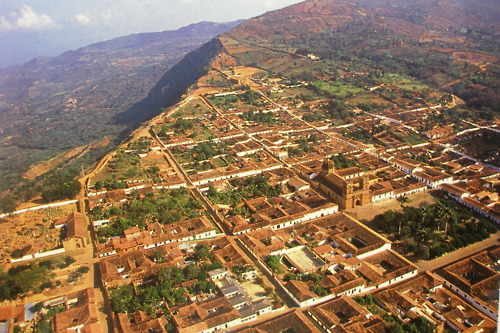
Building Local is a design-build studio that will explore and discuss the aesthetic, assembly and tectonic qualities of local materials: earth, stone, fique, bamboo and wood, engaging students in a series of workshops that will culminate in the design and construction of an efficient and innovative farmhouse. The studio will take place in Barichara, a colonial town located in the North Western region of Colombia. It is open to graduate and upper-level undergraduate students (juniors and seniors) who are interested in engaging in the explorations of these techniques and their use in contemporary architecture.
The studio is organized by:
Maria Carrizosa, a licensed architect in Colombia and holds an undegraduate degree in architecture from Universidad de Los Andes and a dual Master’s degree in Architecture, and City and Regional Planning from UC Berkeley. Her design practice in Colombia ranges from institutional to housing projects, developing two award-winning projects for a public library and a music school in rural communities. She has been involved in architectural education in both Colombia and the US and continues her participation as a guest juror in the College of Environmental Design and as an Adjunct Professor at the Diablo Valley Community College. Maria is interested in collaborative practices in both architecture and planning to provide communities with the necessary tools to improve and shape the spaces they live in.
Ana Maria Gutierrez, the co-founder of Organizmo, an organization that promotes the principles of permaculture, bio-architecture and the implementation of intuitive technologies. She holds a BFA in Architectural Design from the Parsons School of Design and Master in Interactive Telecomunication ITP from New York University.
Adriana Navarro, who holds a dual Master’s degree in Architecture, and City and Regional Planning from the University of California at Berkeley. Born and raised in Colombia (S.A), she received a BS Arch (Honors) from the University of Virginia in 2004. After working for Rafael Viñoly Architects, and OPX Global in Washington DC, Adriana moved to California to begin her graduate studies in 2007. As a 2010 John K. Branner Fellow, Adriana traveled the world, focusing her research, FAVELA CHIC, on socio-cultural aspects of design, particularly analyzing the role and relationship between architecture, planning and urban informality. Adriana is founder of the blog FAVELissues.
For more information visit http://buildinglocal.wordpress.com
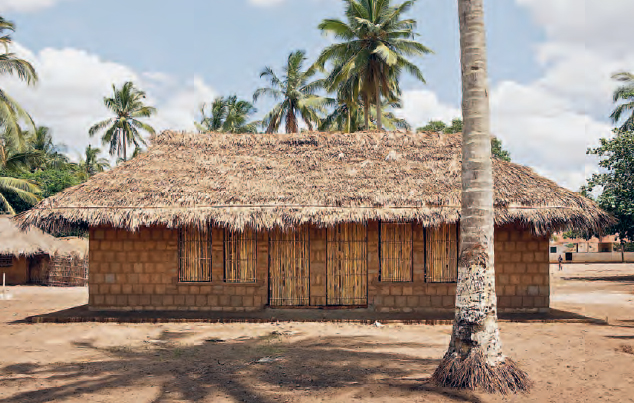
Habitat Cabo Delgado, constructed in Mozambique by Ziegert | Roswag | Seiler Architekten Ingenieure and the Aga Khan Foundation, was founded for the purpose of create more permanent housing solutions using local, natural building materials. Local construction methods were developed and improved upon in ways tailored to local craftsmens’ abilities; thus supporting the local construction culture and reinforcing village identity.
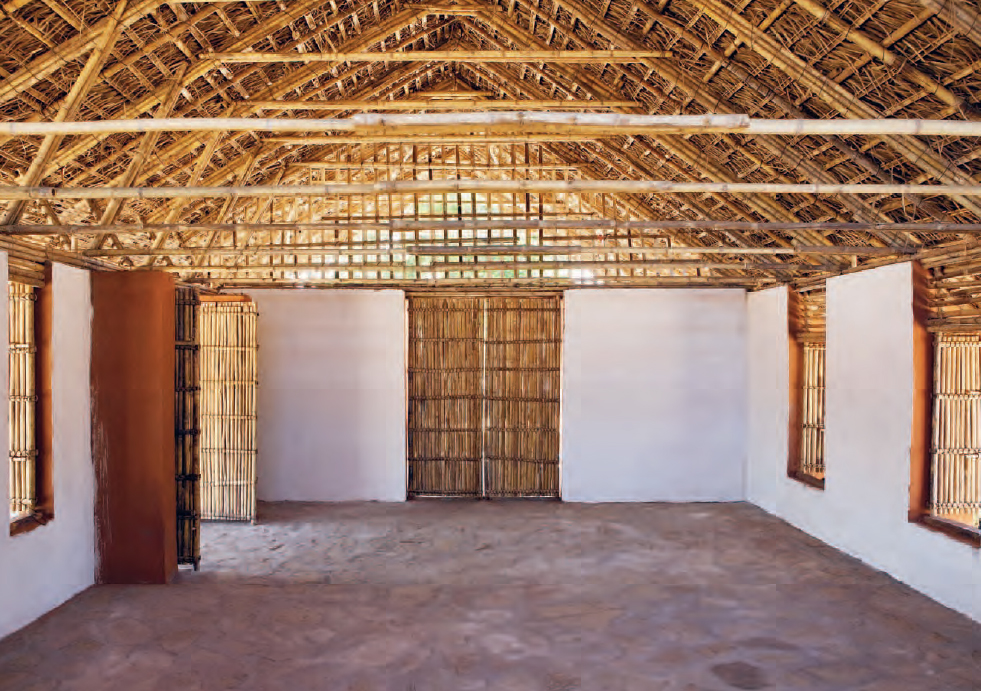
In the first phase of the project, eleven multipurpose learning centres were built to showcase the new construction methods. To facilitate the implementation and dissemination of these techniques, a total of forty local apprentices were trained in ecological building methods – skills they could later use to support themselves financially. As models of low-cost, high-quality, sustainable construction, the learning centres were designed to inspire others to imitate the new style.
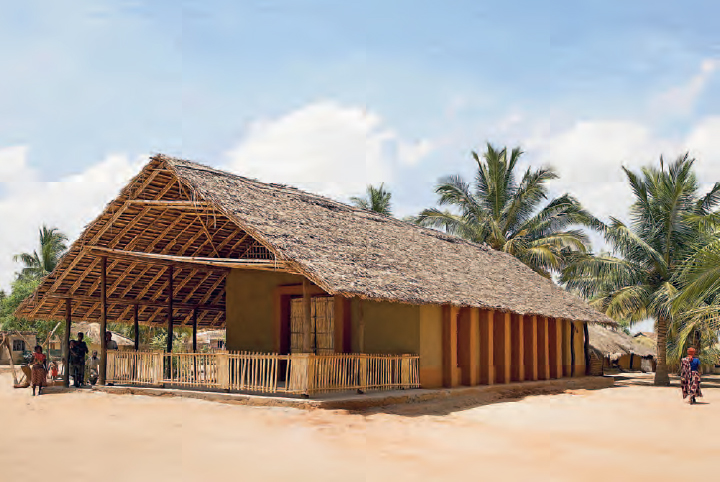
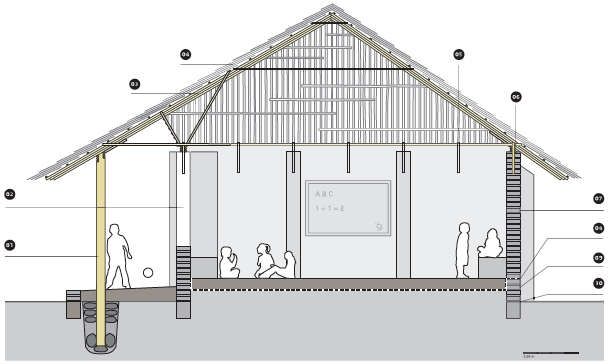
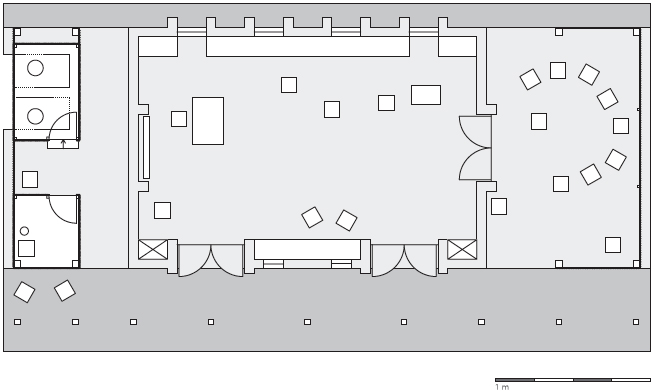
The traditional “wattle and daub” technique has been replaced with an earth-block construction method. The new buildings’ rammed-earth and earth-block foundations are stabilised with 10% cement and covered with a moisture barrier to protect them from rain and rising damp. The earth blocks used to construct the walls are stabilised through the addition of straw.
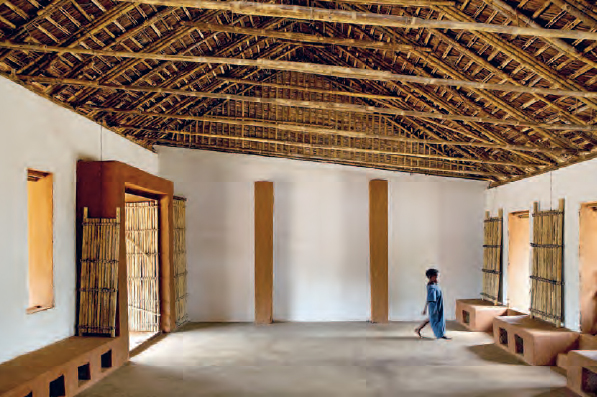
An easy-to-produce triple-layered bamboo beam has been developed for use in roof constructions; the beam is used for nearly all parts of the roof such as ring beams, purlins and triangle trusses. The prefabricated trusses have a span of 6m, enabling the construction of open-plan multipurpose buildings. The bamboo is treated with borax, a natural salt, in order to prevent damage by termites or other insects. Several different traditional palm-leaf roofing techniques are used to construct the roofs. Because locally-available resources like earth, bamboo and leaves are used as building materials, each school displays the colours of its region.
Organized by the Laboratoire de Recherche Historique Rhône-Alpes (LARHRA, UMR-CNRS 5190) and the Institut National d’Histoire de l’Art
From 1785 onwards, the builder and master mason François Cointeraux actively promoted a construction technique of vernacular origin, known as pisé de terre (or ‘rammed earth’), which was at that time confined to southeast France. His cahiers or fascicules from the Ecole d’architecture rurale (School of Rural Architecture), published in Paris in 1790-91, were rapidly translated into seven languages (German, Russian, Danish, English, Finnish, Italian and Portuguese). They attracted the attention of major architects such as Henry Holland (1745-1806) in England, Thomas Jefferson (1743-1826) in America, David Gilly (1748-1808) in Germany and Nicolaï L’vov (1751-1803) in Russia, founder of a flourishing school of earthen architecture in Tiukhili near Moscow, based on Cointeraux’s school of the Colisée in Paris. Through his publications, Cointeraux generated an almost universal interest for this material, as cheap as it was abundant, and encouraged its adaptation to rural or residential architecture.
This success can largely be explained by a desire to revive rural architecture, which was in perfect harmony with both the physiocrats’ line of thought and the actions of agricultural societies. However, Cointeraux never managed to popularise its use widely and lastingly in France. His numerous publications did not achieve their expected uptake with the institutions concerned. He is nonetheless representative of a culture of invention and innovation, highly characteristic of the first industrial revolution and the birth of modern architecture. The aim of the conference is to present a synthesis of the extensive research carried out on François Cointeraux over the course of the last twenty years and to re-situate his work in the wider context of the evolution of ideas and techniques.
Organization
Laurent Baridon, Université Lyon II, LARHRA (UMR 5190), Louis Cellauro, LARHRA, Jean-Philippe Garric, INHA / AUSSER, Gilbert Richaud, LARHRA Advisory board: Hubert Guillaud, Énsa de Grenoble / CRA-Terre, Miles Lewis, Faculty of Architecture, Melbourne University, Claude Mignot, Paris-IV / Centre André Chastel, Liliane Pérez-Hilaire, Centre d’Histoire des Techniques et de l’Environnement du CNAM, Antoine Picon, Harvard School of Design, LATTS
Submission procedures
Proposals (title, abstract of maximum one page, short CV) should be sent to the organizers at the following address: cointeraux.2012@orange.fr Or: Laurent Baridon, LARHRA, Institut des Sciences de l’Homme, 14 avenue Berthelot, F-69363 Lyon Cedex 07, France
The deadline for submissions is July 31, 2011. Results of the selection will be communicated to the authors one month later. The proceedings of the conference will be published in 2013.
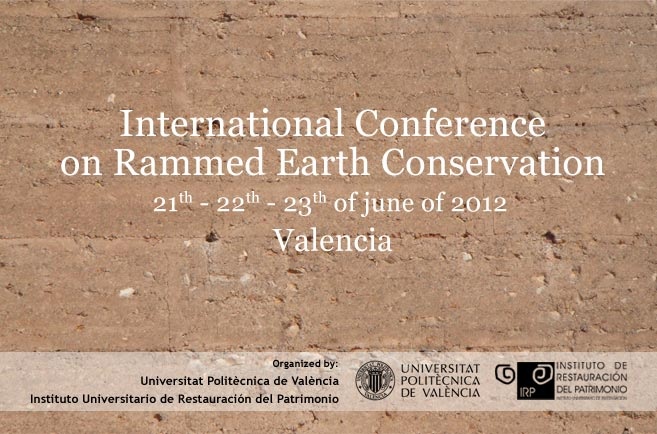
RESTAPIA 2012 is an international congress on rammed earth, its conservation and, in general terms, on earthen constructive techniques and its conservation. It will take place on June 21st,22nd, 23rd 2012 at Valencia. This meeting aims to incentive sharing the restoration experiences of both monumental and non monumental architectural heritage made in the Iberian Peninsula and the rest of the world in order to learn from all these interventions and derive conclusions and perspectives for the future. Thus, it aims to represent an important milestone at international level in the reflection about the conservation and restoration of rammed earth architecture and earthen architecture in general.
The program of RESTAPIA 2012 includes keynote lectures given by international experts on the topic and the presentation of papers and posters during June 21st and 22nd 2012, and an added day of technical visits on June 23rd 2012.
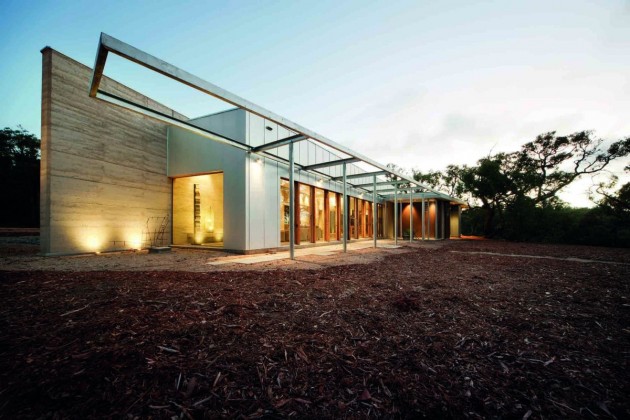
The Hinterland House by http://www.morrispartnership.com.au/ is a rammed earth house designed to be in harmony with the Australian bush. No fences, screens or garden areas were incorporated to insure as little disturbance as possible to surrounding inhabitants. The local animal and plant life can continue to roam as freely as before the structure was built.
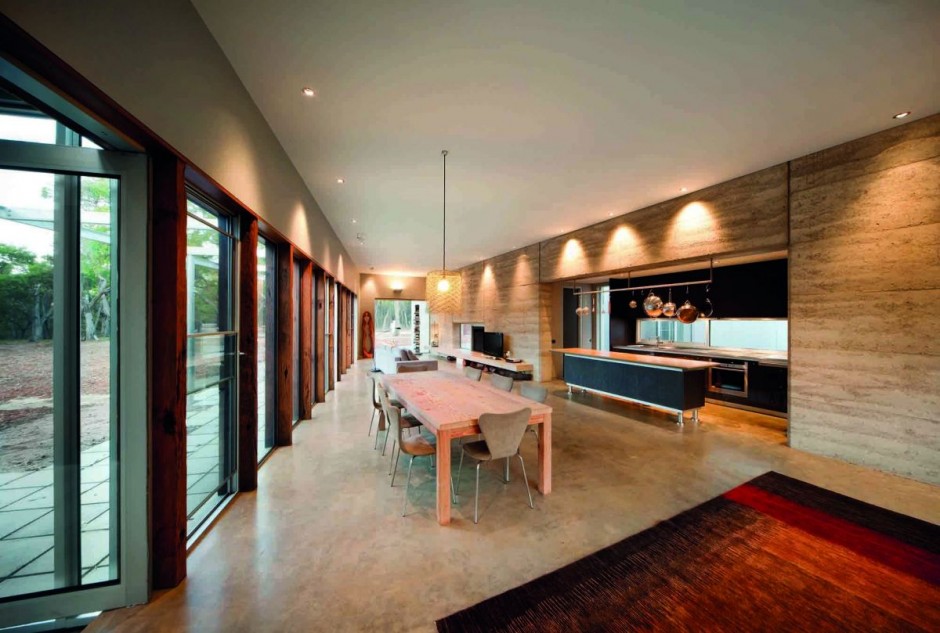
Along with rammed earth, the material palette includes spotted gum, rough recycled timber, concrete floors, corten steel and zincalume. Building environmental features include the earthen thermal mass, double glazing, shading and cross ventilation that mitigates against the need for air conditioning. Sustainability solutions include the use of worm farm waste treatment, solar heating and hot water, and the cellar pantry drawing cooled air through an underground chamber.
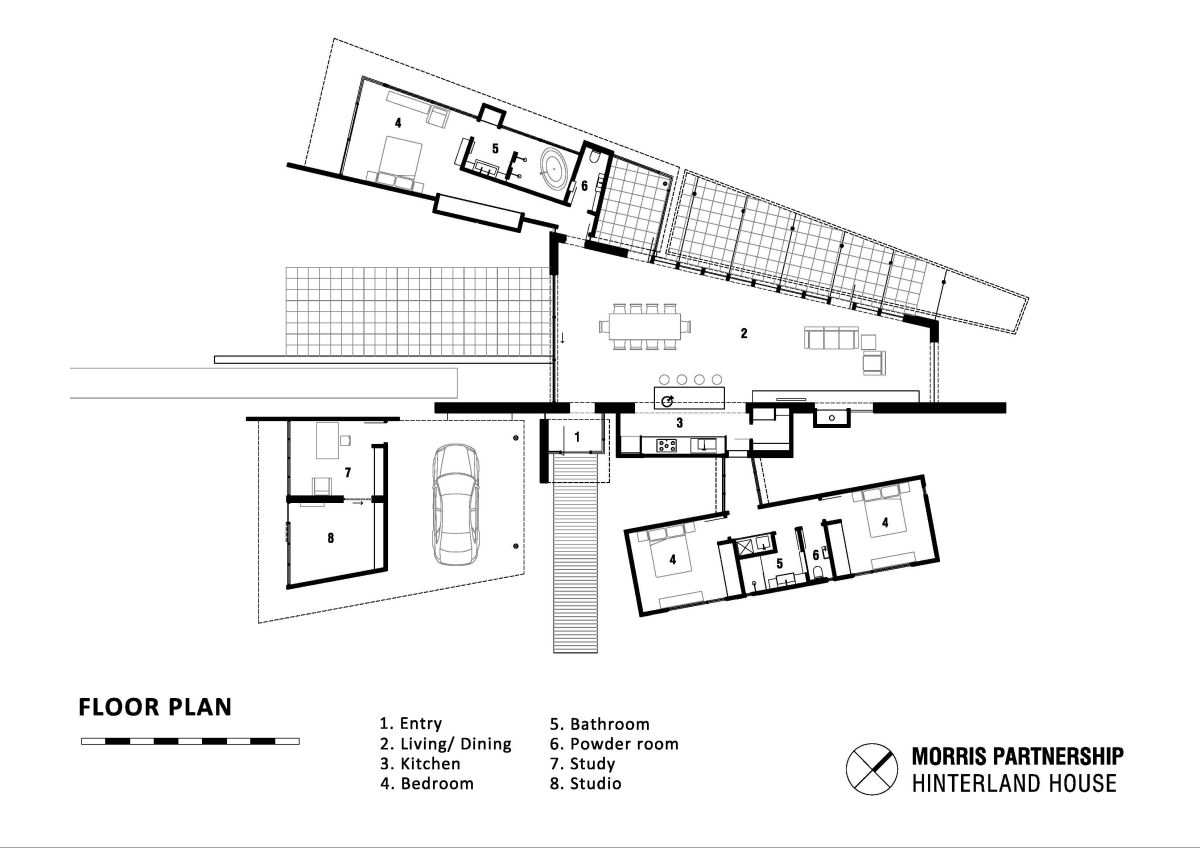
The Hinterland House program includes:
· Living/dining/kitchen core
· Clients’ separate bedroom suite
· Separate studio & study
· Separate guest accommodation
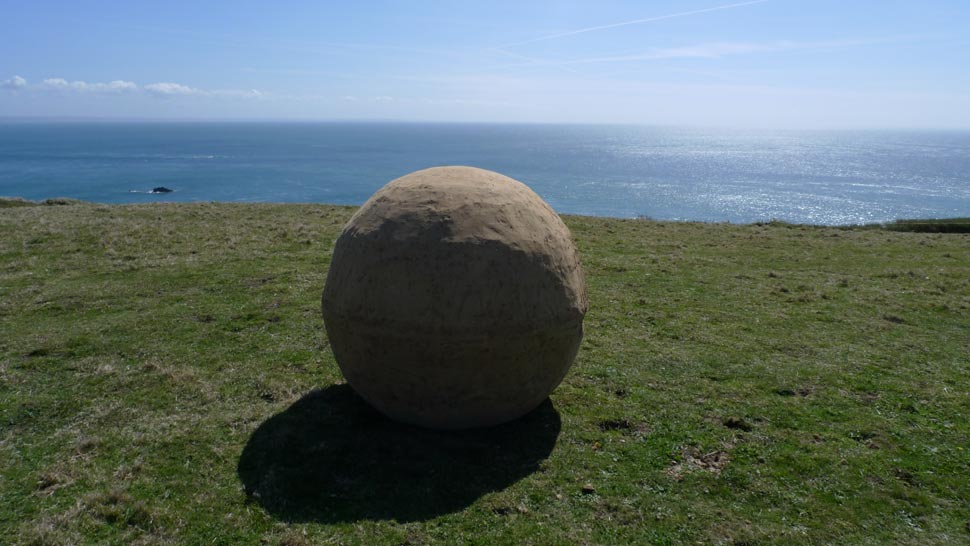
A new site-specific installation of works by Andy Goldsworthy opened on the island of Alderney, located in the Bailiwick of Guernsey in the English Channel Islands. Alderney Stones consists of an installation of 11 boulders spread across the landscape of Alderney.
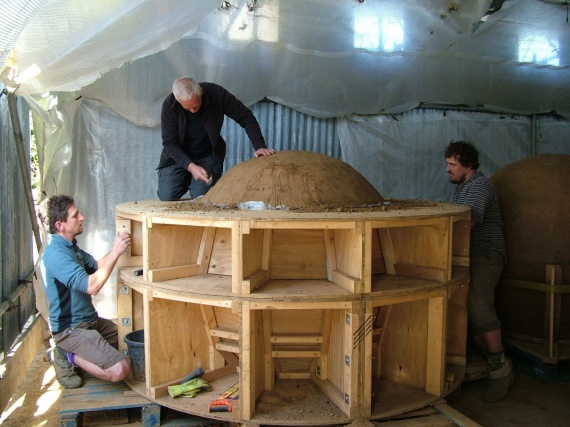
Goldsworthy formed each 3-ton boulder from a mold of rammed earth and other materials sourced from the island, such as berries, seeds, old tools and discarded gloves.
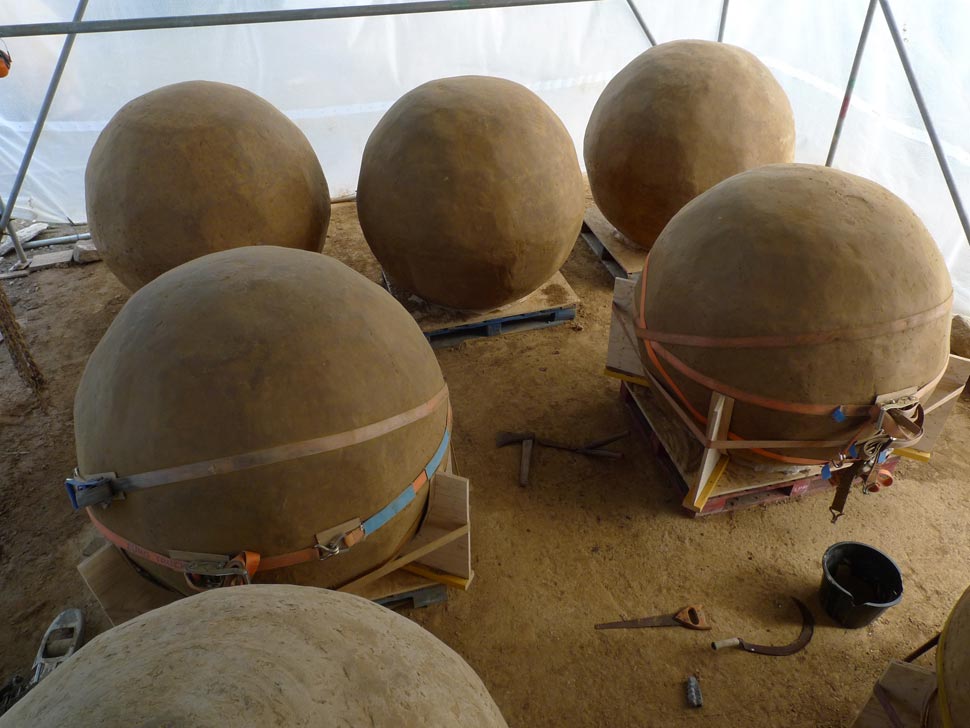
Set in varying degrees of exposure to the elements, the stones will eventually erode, revealing the elements concealed inside, and ultimately return to the land from which they came.
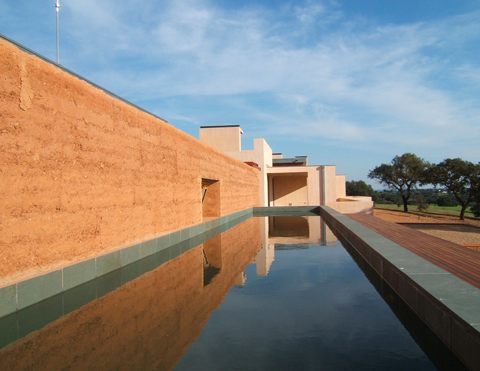
The Dwelling in Beja is a single-family dwelling built of rammed earth and a mixed structure of reinforced concrete and wood with zinc coping. Self-levelling floors of craftwork brick tiles, wood. Traditional render of aerated lime paste and whitewash with the addition of natural pigments. Betão e Taipa was responsible for the entire construction.
Building Stats
Building area 550 m2
Volume of rammed earth 260 m3
Location Beja municipality
Designed by Bartolomeu Costa Cabral, João Gomes and Mário Anselmo Crespo
Date built 2006